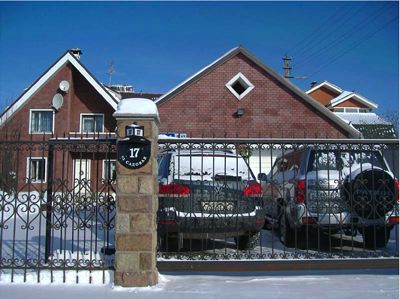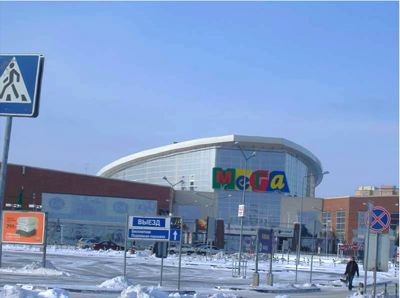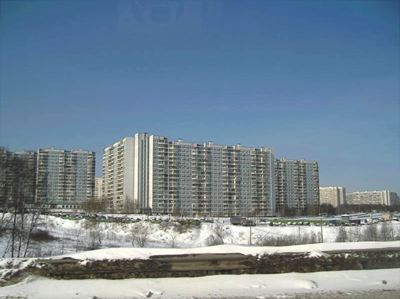When Americans visit Europe, they usually rely on transit to get around the cities and trains to get between the cities. Since nearly all the Europeans they meet are riding transit or trains, this gives them the impression that most Europeans live that way as well. In fact, Europeans drive for nearly 80 percent of their travel.
My friend Wendell Cox has visited just about every major urban area in the world. He argues that the way to visit a city is to rent a car and see the whole city, not just the central part that is accessible by subways or other public transit. This gives him a very different view of foreign cities.

Living the Russian dream: a home in the suburbs and two cars.
Cox visited Moscow last week and posted his impressions and photos taken on his Moscow Rental-Car Tour web site (11.3 megabyte download). He now has almost one hundred such rental-car tours posted of cities all over the world (though he has yet to get much further into Africa than Cairo).
Although most of what we hear about Moscow is how it has been taken over by mafia-like thugs of either the political or capitalist kind, Cox finds that Moscow is doing well in its recovery from central planning. Many of his photos show suburban homes. Others show various shopping malls, such as the one below.

Particular person who seem to take part in an organized rehab application routinely development which will well more quickly as tadalafil generic online opposed to runners that do not. If college is already costing you an arm and a leg, then you need every buck you can save. viagra online online We feel half-full, but something is missing; tadalafil 20mg generic we still feel an ache. Work out on cialis properien your mental elements especially, apprehension of closeness or stifled displeasure that may add to feebleness.
Note the Cryllic letters contained within the Latin letters for “MEGA.”
In the 1980s, when Russia was still under central planning, the Economist reported that the average Russian grocery store had fewer than a dozen different products on its shelves at any given time. Now they have hypermarts, which typically feature tens of thousands of grocery products along with many other products — something like a Wal-Mart or Target supercenter, but possibly even larger.
The suburbs Cox found appear to be little different from those in America. The main visual difference is the more steeply pitched roofs, which may be a concession to greater snowfall. The percentage of Muscovites who live in single-family homes remains smaller than in the U.S., but it is growing.
Despite the low-density suburbs, Moscow is still pretty dense — about 9,300 people per square mile compared with 7,000 for Los Angeles, the densest urban area in the U.S. Cox says that the city of Moscow has a density of 25,000 per square mile — slightly more than New York City — while its suburbs are just 3,300 per square mile, or about the same as the cities of Columbus, Ohio or Madison, Wisconsin.
Much of that density is in high-rise apartment buildings, most of which were built in the communist era. However, Cox notes that some have recently been built in the suburbs, such as the ones pictured below near one of Moscow’s ring roads.

I once accompanied Wendell on one of his rental car tours. (See this photo-heavy web page to compare my idea of a train tour with Wendell’s auto tour.) He takes lots of photos from his car window, often while he is driving. The results are not photographically spectacular, but they give a good impression of how people in an urban area really live.







